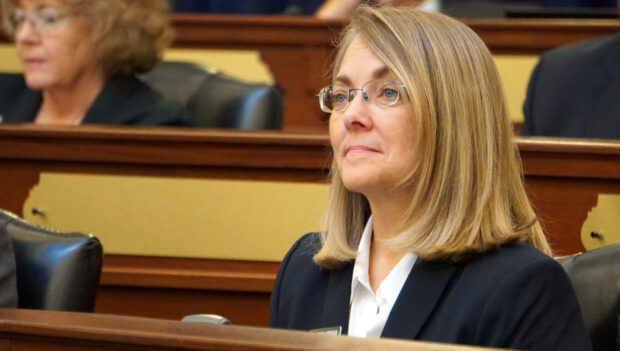Gov. Brad Little said he will protect public schools from the new spending and budget reductions he is asking of other state agencies.
Little is asking other agencies to find places to cut spending over two years’ worth of budgets, but he indicated he would seek additional funding for education.
In a memo to agency heads sent Friday, Little’s chief of staff Zach Hauge said the Division of Financial Management will implement a 1 percent rescission to the 2019-20 budget for all general fund state agencies. DFM will apply a 2 percent base reduction to all general fund state agencies’ budgets in 2020-21.
Rep. Wendy Horman, a vice chair of the powerful Joint Finance-Appropriations Committee, said Little’s approach makes sense.

“I appreciate them taking a proactive approach to the spending reset,” said Horman, R-Idaho Falls. “As you know last session there were a lot of conversations among legislators looking into base spending; our maintenance budgets have gotten so high.”
The 2020-21 budget year begins July 1. The Legislature will set this budget during the 2020 session. Idaho is already in the middle of the 2019-20 budget year, which will be affected by the 1 percent rescissions.
While other agencies must by next week provide written plans to implement the funding reductions, the requirements do not apply to K-12.
“Gov. Little’s No. 1 priority is education,” Hauge wrote in the memo. “He has said it is our moral and constitutional obligation to ensure Idaho students are prepared for a lifetime of learning and eventual careers.
“Gov. Little’s executive budget recommendation not only leaves K-12 schools harmless, but is guaranteed to include continued investment,” Hauge continued.
Idaho Education News requested a copy of Hauge’s memo via a formal public records request filed Monday morning.
Hauge said the reason for the cutbacks is to “prepare for the inevitable economic slowdown.”
“Considering the uncertain economic forecast, Gov. Little is calling for a ‘spending reset’ as part of his FY 2020-2021 executive budget recommendation,” Hauge wrote. “The goal is to better align state spending growth with anticipated state revenue growth in the coming years, to ensure the state fulfills its constitutional requirement for a balanced budget.”
Horman agreed.
“Our economy has been on fire for about three years, so it is only natural it would slow down somewhat,” she said. “Hopefully we’re not headed for a recession any time soon. But when you’ve been at historic revenue levels like we have had for the last several years, at some point that is going to slow down and we are there.”
Horman said she expects budgets and revenues to be a big part of the debate during the upcoming session.
“Asking agencies to look into this now will certainly make our job easier,” she said. “When we get to town a lot of the homework will have been done so we can reduce spending from base programming.”
K-12 spending accounts for nearly half of Idaho’s general fund budget, which means the savings and cutbacks would have to come from other agencies that combine to make up the other half of the budget.
Hauge stressed agency directors should work quickly to outline a plan that minimizes the impact on services benefitting Idahoans.
“The earlier your agency is provided with notice, the less disruptive a reduction will be; and the more flexibility your agency is provided, the more creative you can get in achieving your agency’s statutory mission in a resource-constrained environment,” Hauge wrote.
Superintendent of Public Instruction Sherri Ybarra has already requested a 5.3 percent spending increase for public schools in 2021. Her $100.8 million funding increase is based around a $40 million request to increase salaries for veteran teachers.
